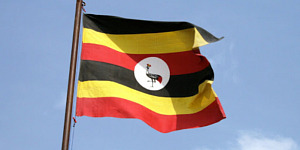Uganda's central bank cut its Central Bank Rate (CBR) by 50 basis points to 9.5 percent, saying a "cautious easing of monetary policy is warranted to boost private sector credit growth and to strengthen the economic growth momentum" as inflation is forecast to remain around the medium term target while economic activity is slowly gaining momentum.
The Bank of Uganda (BOU) has now cut its rate by 250 basis points this year following cuts in February, April and June. In 2016 the rate was cut by 500 points.
The BOU's band around CBR was maintained at plus/minus 3 percentage points and the margin on the discount rate at 4 percentage points so the rediscount rate and the bank rate were lowered to 13.5 percent and 14.5 percent, respectively.
Uganda's headline inflation rate rose slightly to 5.3 percent in September from 5.2 percent in August while core inflation dropped to 4.1 percent in August from 4.5 percent in July.
"The consumer price index (CPI) data indicates that inflation remains subdued," the BOU said, adding the rise in inflation was largely due to higher costs of fuels while food crops inflation continued to fall due to to improved supply.
The central bank's outlook for inflation was unchanged since the previous meeting of the Monetary Policy Committee in August, with core inflation seen remaining within the target range of 5 percent. The bank's target is within a range of plus/minus 2 percentage points.
Upside risks remain muted, the BOU said, with the exception of possible higher food prices due to crop pests and severe rains in parts of the country. The inflation forecast is also based on the assumption that the exchange rate of the shilling would remain around the current level with "a stronger depreciation" raising the risk of higher inflation.
After falling sharply in 2014 and 2015, Uganda's shilling depreciated further last year but at a slower pace. This year the shilling has remained more stable and was trading at 3,600 to the U.S. dollar today, practically unchanged form 3,602 at the start of this year.
Uganda's economy recovered in the second half of the 2016/17 financial year, which ended June 30, after bad weather hit the agricultural sector in the first half of the year. Growth in 2016/17 was estimated to have slowed to 3.9 percent from 4.7 percent in 2015/16.
However, the BOU said private sector credit remains sluggish but confirmed its forecast from August for economic growth in the current 2017/18 financial year of 5.0 to 5.5 percent, a bit lower than potential growth.
Over the medium term growth is projected to accelerate to between 6.0 and 6.5 percent.
In the second calendar quarter, Uganda's Gross Domestic Product grew by an annual rate of 5.5 percent, up form 4.6 percent in the first quarter.






































